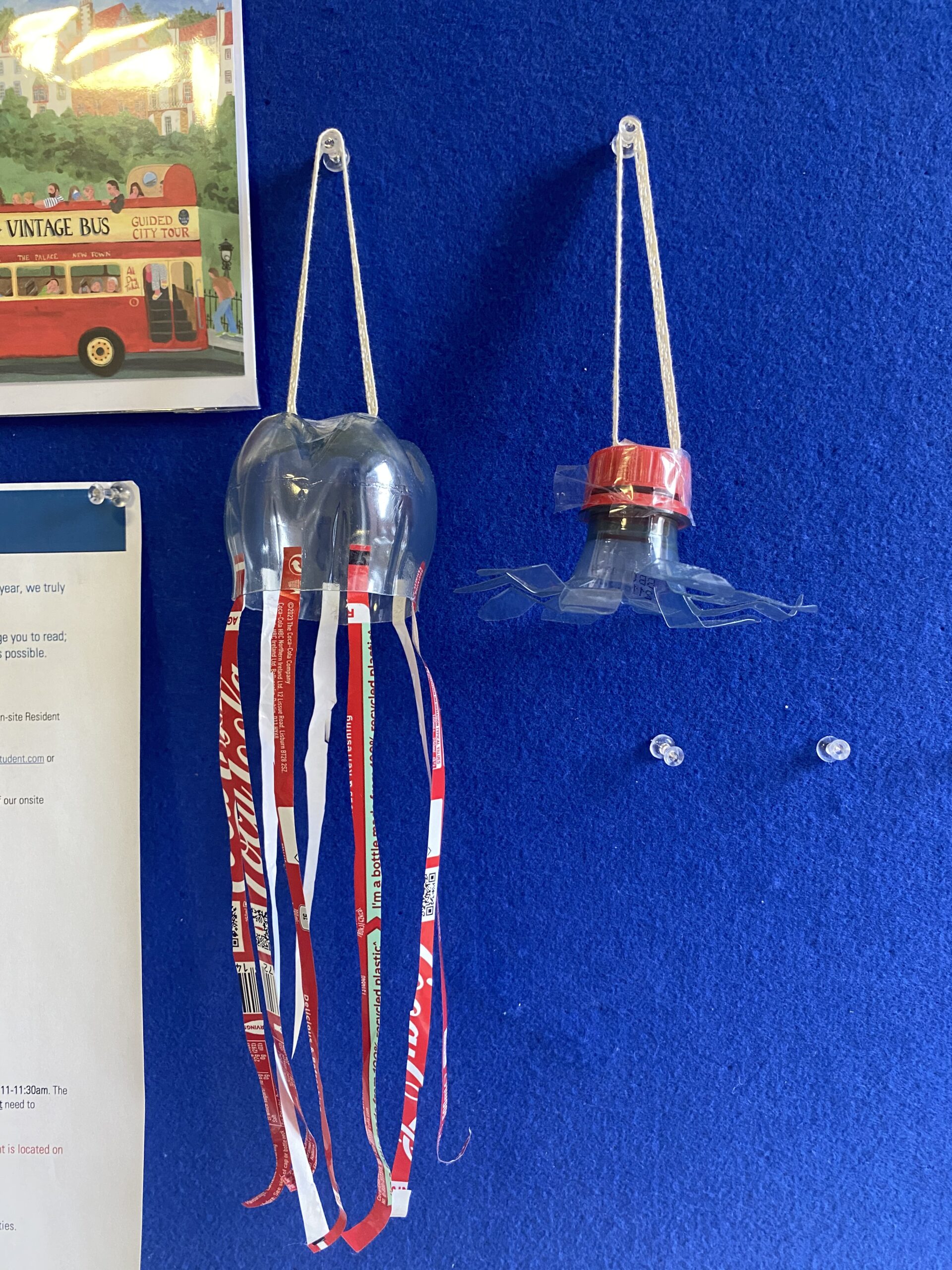week 8

In this workshop, I prepared an empty Coca-Cola plastic bottle and an empty hair conditioner bottle.
Initially, due to a limited set of tools, I discovered that many redesigns of plastic bottles require additional materials such as glue and paint. However, with only a few materials at hand, including some glue and shared scissors, I decided to start with the Coca-Cola bottle itself and explore how to creatively utilize its characteristics.
I cut off the upper half of the bottle, and during the cutting process, I found it a bit challenging and required sharp scissors. This experience felt peculiar because, despite plastic bottles being ubiquitous in our lives, there are few experiences of using them to create new works of art. We are accustomed to using them as containers for various liquids but rarely consider repurposing them.
After cutting off the part with the bottle neck, I obtained a funnel-shaped object. I cut the funnel-shaped part into the shape of a flower. I attempted to bend the “petals” outward with my fingers, but due to the material’s hardness, the “petals” ended up with many creases, giving them a visually rigid appearance. Consequently, I adopted a different approach and folded the petals in a “z” shape, resulting in the entire object resembling a “spider.” Meanwhile, I observed the bottom of the bottle, noticing it was the fullest part of the entire bottle. I preserved the lower end, then cut the Coca-Cola label into thin strips and adhered them to the bottom. This transformed the object, evoking the image of a jellyfish.
In this workshop, I discovered that designers can establish connections with non-organic materials and imbue them with new meanings. As I created the “spider” part, I felt the vitality of such materials. By employing different techniques, designers can elicit varied images from the same object. For instance, shaping it outward creates a “flower,” while a “z” shape results in a “spider.” These images are all assigned by the designer, allowing the Coca-Cola bottle to gradually manifest new life through its connection with people, evolving from a regular bottle into a unique item. The chemical reaction produced by the combination of designers and plastic items is truly fascinating.
When faced with plastic pollution, simply discarding these items does not solve the problem. Substances do not disappear due to human disposal; instead, they may have various impacts on nature. However, by establishing a connection with humans and assigning new meanings through design, just like redesigning a Coca-Cola bottle into a “jellyfish” or a “spider,” we, as designers, need to contemplate giving plastic a new life and significance.



